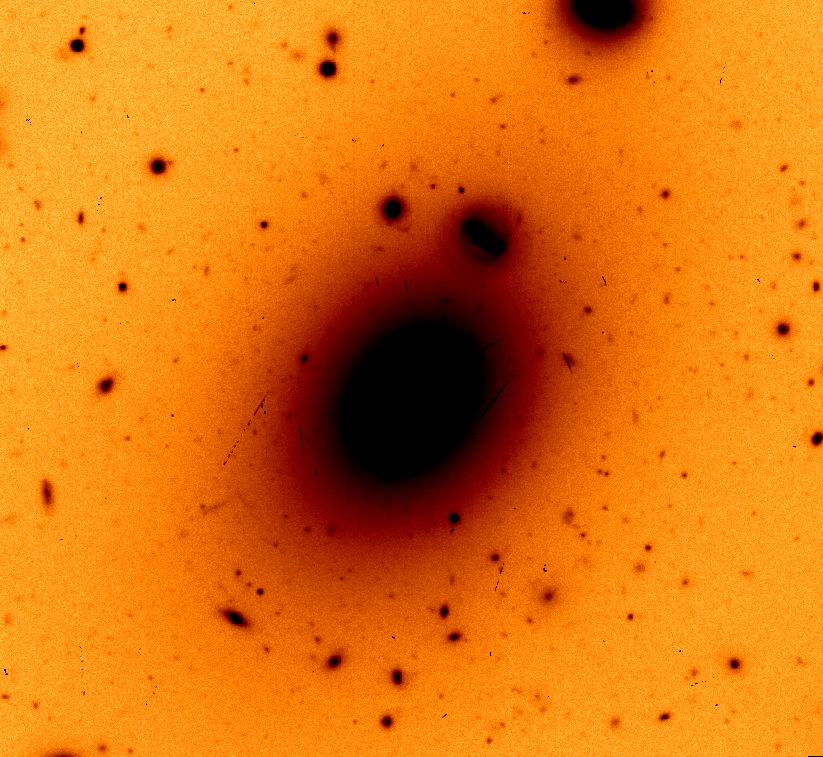| 1st of March 2016 |
|---|

|
| The supermassive black hole, that wasn't |
| by Juan Madrid (CASS) and Carlos Donzelli (Cordoba Observatory, Argentina) |
|
Supermassive black holes are though neighbours. Supermassive black holes reside in the center of galaxies and occupy the same space as normal stars belonging to the central part of the galaxy. Stars that come too close to them end up being thrown vast distances from the galactic center. Through this process supermassive black holes often deplete the stellar content of galaxy cores. Supermassive black holes often end up as unchallenged kings of their central galactic area with less neighbouring stars than expected. Astronomers have been looking for this effect in order to identify the presence of black holes. The galaxy above, the brightest galaxy of the Abell 85 cluster was tipped to host one of the most massive black holes ever discovered. This image was obtained with the Gemini telescope, an optical telescope with a diameter of 8 meters and located in Northern Chile. The analysis of the new Gemini data revealed that the brightest galaxy of Abell 85 does not have a light deficit. On the contrary, the excellent resolution of the Gemini data shows that the core of this galaxy has a light excess incompatible with the theory that it hosts a supermassive black hole. Reference: 2016, ApJ, 819, 50 http://stacks.iop.org/0004-637X/819/50 |